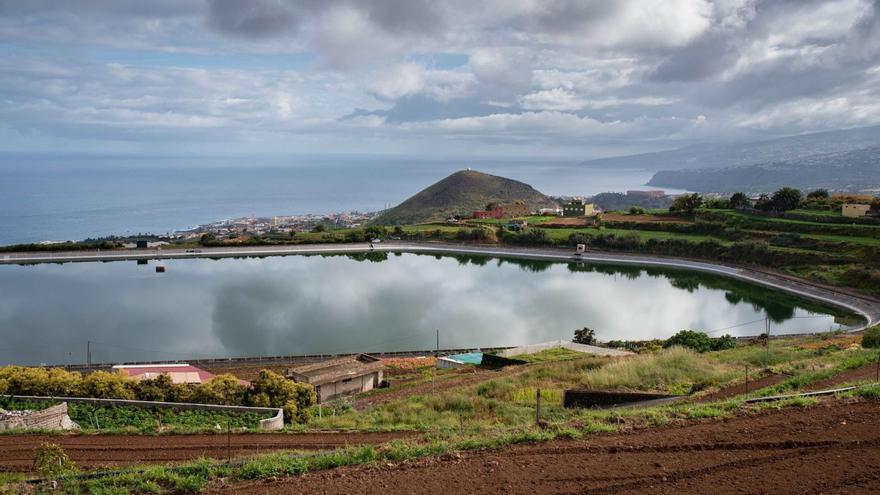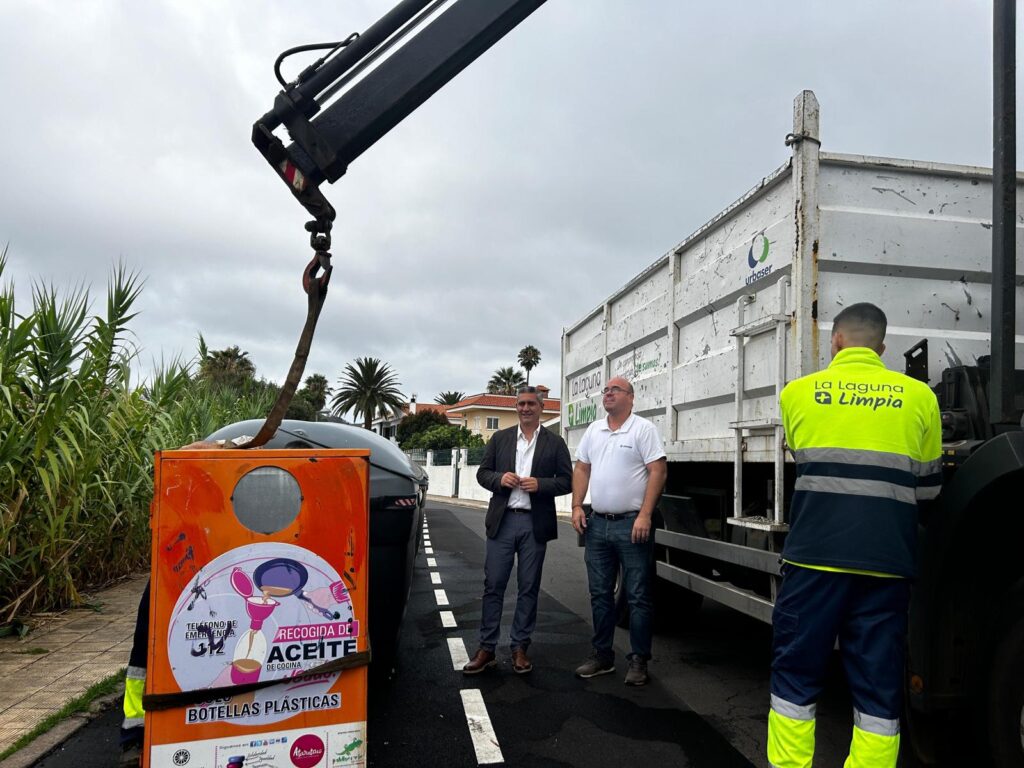
Tenerife resists the advance of the drought that terribly hits the Peninsula despite the fact that the 21 rafts on the Island are half full, exactly 45% as of last August 1st. The council assures, in the words of the counselor for the primary sector, Javier Parrilla, that the Island is avoiding drought for now “thanks to the commitment to reclaimed water.” It asks for “caution” in consumption at the time of irrigation due to the progressive decrease in rains, but maintains the guarantee of supply “with total normality” in the coming months.
The agricultural sector depends on water for irrigation, but no longer only on rain. Of the 5 million cubic meters of reservoir capacity Tenerife residents, 3.5 are in the North and 1.5 in the South, approximately. Different models, but with a tendency towards unification, through treated water as the axis of planning. Tenerife is enduring the drought thanks to the boost given to this system in recent years. El Hierro, La Gomera and Fuerteventura have declared a water emergency for different reasons, while here it resists “reasonably well”, but, insists the counselor, “we have to be expectant”. The high temperature data in July, the highest recorded in the series since 1991, and the low rainfall advise caution.
little significant
Parrilla summarizes: «5% of global storage has been lost from one year to the next, but in the South reclaimed water has increased up to 70%”. He underlines:_“That loss is a little significant data”. The counselor points out that 90% of agricultural irrigation in what is called by the public company Balten Zone 5 (Valle de Guerra, Tejina, Tegueste and part of Tacoronte) is already carried out with reclaimed water. Parrilla points to unique phenomena such as Santa Úrsula or El Sauzal receiving more rain this July than in the last two years. Tacoronte or El Ravelo, where they did not exceed 50 liters per square meter, have reached 80. The humidity of the trade winds, Parrilla points out, “has affected the vineyard, although on the positive side there has been no need to irrigate.”
The Cabildo insists on “a change of model, which leaves behind the , from September-October to April-May”. That meant that since May the water stopped entering and the rafts suffered a downward curve. Reclaimed water has changed the trend. “It is very important to maintain storage even from a psychological point of view,” adds the counselor. As an example, in the Valle Molina reservoir the sheet of water is barely one meter high today, with 10,000 to 15,000 cubic meters. But it is not emptied because it always enters and the one that leaves is reduced.
waterproofing
The Cabildo, through Balsas de Tenerife (exclusive dependence on the rainy season), is now facing the waterproofing of the Taco Mountain Raft, in Buenavista del Norte, for almost 1.7 million euros. It is the largest reservoir of irrigation water on the Island, with 821,739 cubic meters –as of August 1, 43% full, 352,008–. It represents the fifth performance of draft maintenance after Valle Molina, in Tegueste; El Saltadero, in Granadilla; Llanos de Mesa, in San Juan de la Rambla and Benijos, in La Orotava, is currently underway.
The North and the rain
The model will not disappear completely in the North where there will always be a dependence on rainfall to a greater or lesser extent. The future, however, also passes there through reclaimed water. Especially from the increase in purification and desalination in treatment plants of Santa Cruz and Adeje-Arona. In the Northeast. It has even been necessary to reduce the contribution of this water. The calculations are bimonthly and from the 160% increase in relation to the previous year in the first two months of this year, it went to 190% in the second and was reduced to 160% in the third. In the August-September period, only the same as in 2021 will be injected at most. A question of balance. It is due to factors such as the appearance of the avocado, which carries a lot of water, between vines and to the detriment of the latter. The recovery of 1,100 hectares of cultivated land on the Island in the last three years changes the concept of water distribution.
water deficit
The hydrological year will end in September after starting in October last year. It can be considered normal so far although the rainfall deficit Compared to the previous year, today it is a striking -39%. Other factors are the drop in production from the wells and the rise in costs. Parrilla recalls that Balten maintains a great value for money and hence “many farmers buy from us water.” To this is added the commitment that “the extra costs are not faced by the producers but by the Cabildo.”
Parrilla emphasizes that “we have to keep looking at heat.” He calls “for good sense and consumption in moderation.” Even in the water supply, in the houses, not only in the fields. He concludes: _ “Regenerated water allows reserves to be dedicated to human consumption, as is already the case in La Matanza or La Laguna.”
A change of model
Ana Sánchez Espadas, manager of Balsas de Tenerife (Balten), values that “traditionally, the North is nourished by rainwater and the South has been regenerated for 30 years with treatment for use in irrigation.” This input, she notes, “has been critical to being able to maintain an adequate supply level.” She recalls that “the rainfall data for recent years shows a decline and it rains less and less.” The alternative solution is to extend the reclaimed water. This exercise has begun in the Northeast with the Valle de Guerra regional treatment plant as the axis and raising it for the first time to the Valle Molina pond, in Tegueste. “The future lies in more flows that make up for this rainwater deficit. Climate change is leading to drier and longer summers »she concludes.















